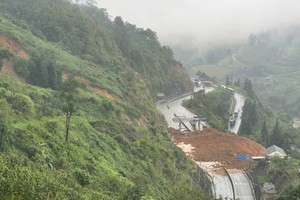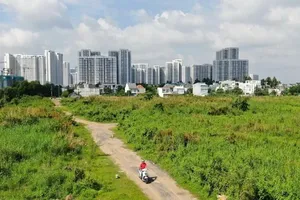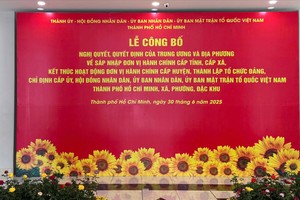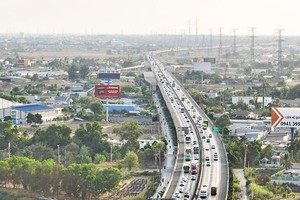Deputy Minister of Agriculture and Rural Development Vu Van Tam August 14 said the ministry’s opinion is to forbid strictly red-eared turtle nourishment and releasing it into rivers, aiming to protect environment.

Red-eared turtle could seriously affect the nation's ecological balance if left uncontrolled.
According to Professor Nguyen Dinh Hoe from the Association for Natural and Environment Protection, Government needs to quickly implement measures to wipe out red-eared turtles as soon as possible.
He said the turtle is one of the world’s 100 worst invasive species.
The turtles damage the agriculture because they eat animals and plants under the water, he added.
The environmental devastation by the turtle is higher than the devastation by yellow snails because the turtle is bigger, healthier and live longer than the yellow snails, Hoe said.
To curb the development of the turtle, people need to catch and stop releasing the turtle into rivers.
The harmful turtle warning made after the Can Tho Seafood Import Joint Stock Company imported 24,000 red-eared turtles from US was too late.
The turtles came into Vietnam in past years by several ways including through tourism.
Hoe also said the import and breeding process had been monitored carefully by the Ho Chi Minh City's Department of Aquaculture Protection.
The ministry asked the Can Tho Seafood Import Joint Stock Company to re-export the batch of the turtle as soon as possible.
The ministry also required provincial authorities to check the numbers of turtles and keep a close eye on the situation as well as to strengthen inspections at the breeding ponds to ensure none escaped.
The danger from strange animals
The invasion of strange animals in Vietnam is still modest but they are latent factors that can damage agriculture.
The yellow snail, imported into Vietnam around ten years ago, develops very strongly and its major food is rice leaves. It has damaged rice in many provinces in the Mekong Delta and is spreading to the central region and the north of Vietnam. Yellow snails make rice output fall and Vietnam has to spend hundreds of million dong in order to battle this kind of snail every year without satisfactory results.
In 1996, a private company imported one kind of insect as food for ornamental birds, named Tenebrio monitor, which can harm many kinds of crops. However, the import was timely prevented.
From 1996-1998, pirana tiger fish (Serralmus nattereri) appeared on the market for ornamental fish. This species of fish originates from the Amazon River. It is carnivorous and very cruel. If this species enters the natural environment, it can kill other aquatic animals and also be very dangerous to humans The Ministry of Fisheries has banned the import of this kind of fish.
In the Mekong Delta, the momosa, one variety of trees originates from Central America, one of 100 species of creatures that can invade the environment on a large scale, has attacked Dong Thap Muoi region and U Minh cajuput forest.
Related article:
Environmentally harmful turtles seen in Vietnam
























